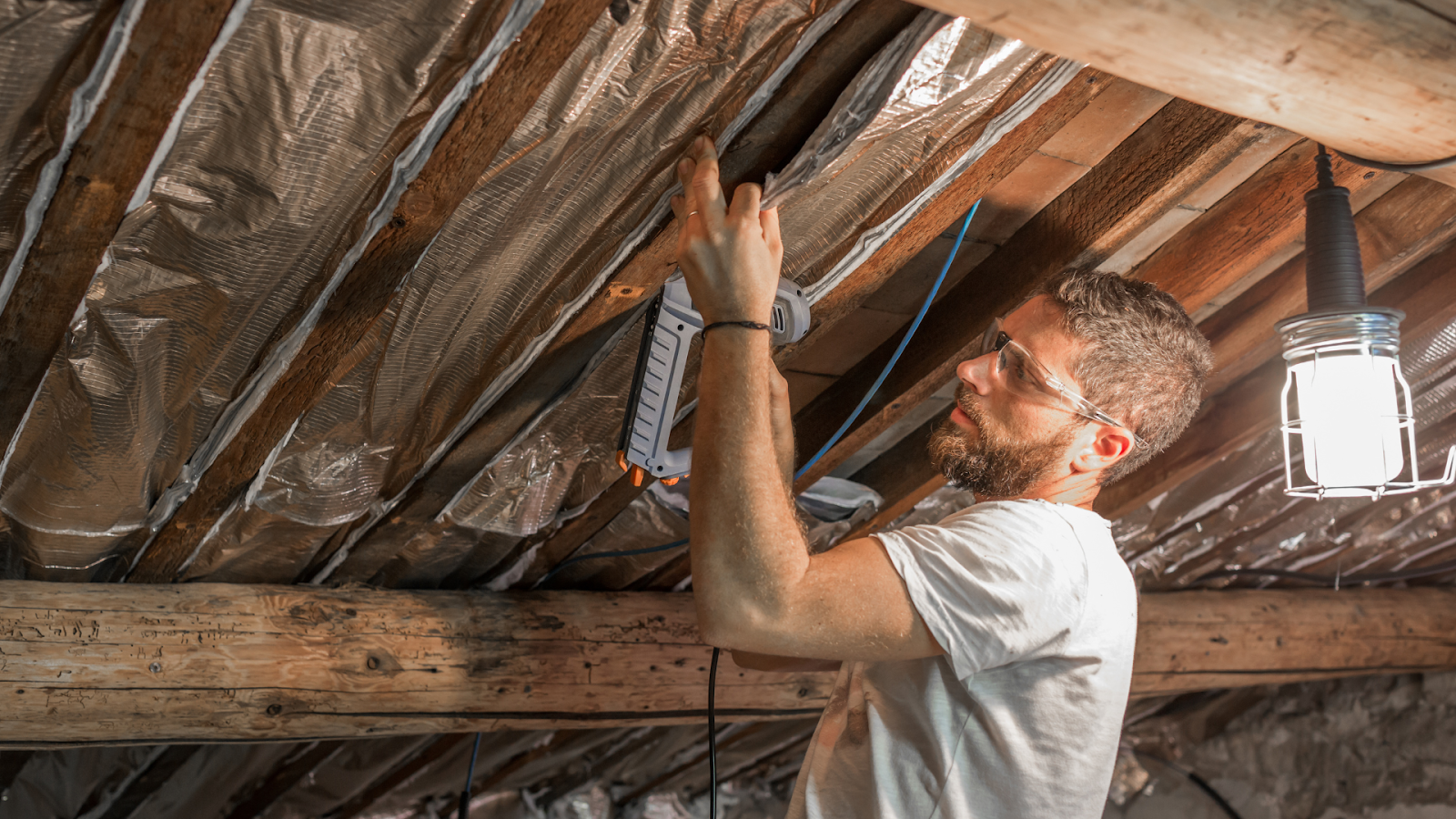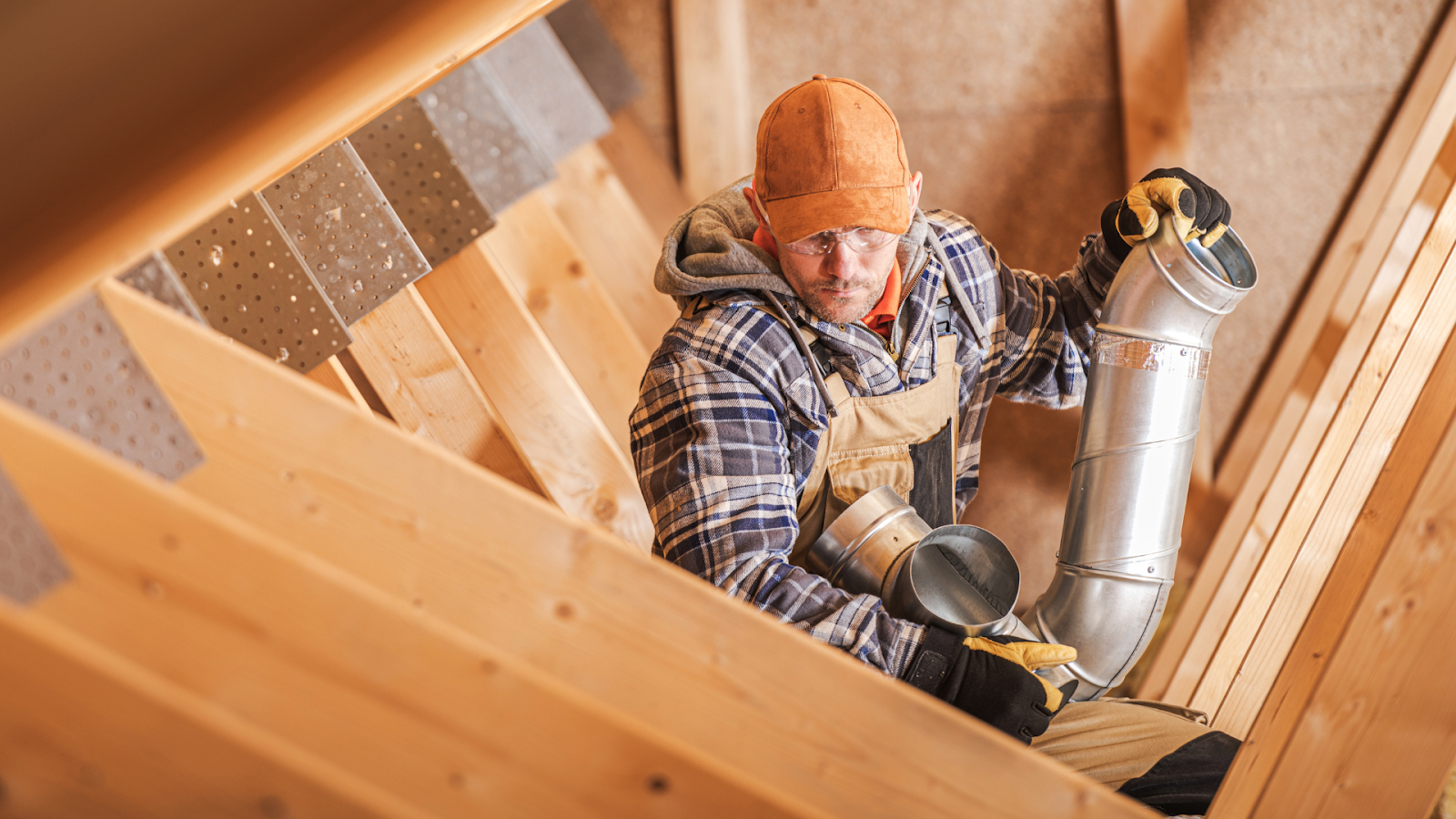Attic Insulation: Keeping Your Home Comfortable And Energy-Efficient
Discover How Proper Attic Insulation Can Enhance Home Comfort And Energy Efficiency. Learn About Insulation Types, Installation Tips, And Cost-Saving Strategies.
- Types of Attic Insulation
- Fiberglass Insulation
- Cellulose Insulation
- Spray Foam Insulation
- Radiant Barrier Insulation
- Factors to Consider Before Insulating Your Attic
- Climate Considerations
- Current Insulation Assessment
- Attic Ventilation
- Moisture Control
- Calculating Insulation R-Value
- Calculating Required R-Value for Attic Insulation
- Preparing Your Attic for Insulation Installation
- Inspection and Cleaning
- Air Sealing
- Safety Precautions
- DIY Attic Insulation vs. Professional Installation
- Pros and Cons of DIY Insulation
- Pros
- Cons
- Step-by-Step Guide to Attic Insulation Installation
- Gathering Materials and Tools
- Installing Insulation Batts or Rolls
- Installing Loose Fill Insulation
- Applying Spray Foam Insulation
- Insulating Attic Access Points
- Insulating Attic Hatches and Doors
- Insulating Attic Staircase
- Common Mistakes to Avoid in Attic Insulation
- Insufficient Insulation Thickness
- Blocking Ventilation Channels
- Ignoring Air Leaks
- Maintaining Attic Insulation
- Energy Efficiency and Cost Savings with Proper Attic Insulation
- Summary: Achieving Optimal Attic Insulation for a Comfortable and Energy-Efficient Home
Discover how proper attic insulation can enhance home comfort and energy efficiency. Learn about insulation types, installation tips, and cost-saving strategies.
Attic insulation is crucial for maintaining your home's comfort and energy efficiency, yet it's often overlooked. It plays a key role in keeping indoor temperatures stable year-round, reducing the need for heating in winter and cooling in summer. This not only makes your home more comfortable but also lowers energy bills.
Additionally, proper insulation extends the lifespan of heating and cooling systems, improves indoor air quality, and prevents moisture-related issues like mold and mildew. Investing in attic insulation is a smart move for homeowners looking to enhance their living environment and save on energy costs.
Types of Attic Insulation
When it comes to insulating your attic, there are several types of insulation to consider, including structural insulated panels (SIPs). Each type offers unique characteristics and benefits, allowing you to choose the one that best suits your home's needs and your budget.
Fiberglass Insulation
Among the most widely used types, fiberglass insulation is composed of fine glass fibers and comes in batts or rolls. Known for its affordability and ease of installation, fiberglass effectively slows heat transfer and maintains consistent temperatures within your home.
Cellulose Insulation
Made from recycled paper products treated with fire retardants, cellulose insulation is eco-friendly and boasts excellent thermal performance. It is typically blown or sprayed into the attic space, filling gaps and forming a seamless barrier against heat transfer. Additionally, it is resistant to pests and mold, making it a preferred choice for many homeowners.
Spray Foam Insulation
Spray foam insulation is a highly versatile option offering superior thermal performance. Upon application, it expands to fill even the smallest crevices and gaps in your attic, forming an airtight seal that prevents air leakage and minimizes energy loss. Despite its higher initial cost, the long-term energy savings often justify the investment.
Radiant Barrier Insulation
Designed to reflect radiant heat away from your attic, radiant barrier insulation helps keep your home cool, particularly in hot climates. Typically made of a reflective material like aluminum foil, it can be installed in the attic rafters or on the attic floor. Radiant barrier insulation is particularly effective in reducing heat gain during the summer months and can complement other insulation types for comprehensive thermal protection.
Factors to Consider Before Insulating Your Attic
Considering factors before insulating your attic is crucial to ensure optimal performance and efficiency of the insulation, prevent potential issues such as moisture buildup or inadequate insulation levels, and ultimately, enhance the comfort and energy efficiency of your home.
Climate Considerations
Assess your local climate to determine the level of insulation needed. Cold climates may require higher R-values to retain heat, while hot climates may prioritize heat reflection to keep the space cool.
Current Insulation Assessment
Evaluate the existing insulation in your attic to determine if additional insulation is necessary. Inspect for signs of wear, damage, or inadequate coverage that may warrant an upgrade.
Attic Ventilation
Ensure proper attic ventilation to prevent moisture buildup and maintain air circulation. Adequate ventilation helps regulate temperature and prevents issues like mold and mildew growth.
Moisture Control
Implement moisture control measures to safeguard against water damage and mold growth, considering how these issues can impact attic insulation costs. Address any existing leaks or moisture issues before installing insulation to maintain a dry and healthy attic space.

Calculating Insulation R-Value
Calculating insulation R-Value is crucial because it helps homeowners determine the effectiveness of their insulation in resisting heat flow. The R-Value measures insulation's ability to resist heat flow. A higher R-Value indicates better insulation performance, crucial for maintaining comfortable indoor temperatures and reducing energy costs.
Calculating Required R-Value for Attic Insulation
To determine the right R-Value for attic insulation, identify your climate zone using the U.S. Department of Energy guidelines and check local building codes for specific requirements. Evaluate any existing insulation to understand its R-Value. The target R-Value generally ranges from R-30 to R-60. Calculate the additional insulation needed by subtracting the current R-Value from the target. Select an appropriate insulation material that fits your attic's space constraints to meet the required R-Value. Online calculators can help refine your calculations, ensuring your insulation enhances energy efficiency and comfort.
Preparing Your Attic for Insulation Installation
Preparing your attic for insulation installation is important to optimize insulation effectiveness, prevent issues like air leaks and moisture buildup, and enhance energy efficiency and comfort in your home.
Inspection and Cleaning
Begin by inspecting the attic for any signs of damage, leaks, or pest infestation. Clean out debris and remove any obstacles that may hinder the insulation process, ensuring a clean and safe workspace.
Air Sealing
Seal any gaps, cracks, or openings in the attic to prevent air leaks and ensure maximum insulation effectiveness. Use caulk, foam sealant, or weatherstripping to air seal around windows, vents, pipes, and other penetrations.
Safety Precautions
Prioritize safety by wearing protective gear such as gloves, goggles, and a mask to avoid exposure to insulation fibers and potential hazards. Use proper ventilation and lighting in the attic to create a safe working environment.
DIY Attic Insulation vs. Professional Installation
When it comes to improving home efficiency and comfort, insulating your attic is a critical step. Whether you're considering a DIY project or hiring a professional insulation contractor, understanding the benefits and drawbacks of each approach can help you make an informed decision.
Pros and Cons of DIY Insulation
Pros
Cost Savings: DIY insulation projects can often be more cost-effective as you eliminate labor costs associated with hiring professionals.
Flexibility: DIY allows you to work at your own pace and schedule, making it convenient for homeowners with busy lifestyles.
Learning Experience: Taking on a DIY insulation project provides an opportunity to learn new skills and gain a better understanding of your home's insulation needs.
Cons
Lack of Expertise: Without professional training and experience, DIY installers may not achieve optimal insulation coverage, leading to reduced energy efficiency.
Safety Risks: Insulation materials can pose health hazards if mishandled, such as skin irritation or respiratory issues, requiring proper safety precautions.
Potential Errors: Incorrect installation techniques or inadequate insulation coverage may result in energy inefficiency, moisture problems, or even structural damage over time.
Professional contractors offer expert installation, access to better materials, and safety assurance. Their work comes with warranties, saving time and providing peace of mind. The efficiency and reliability of a professional outweigh DIY savings.
Step-by-Step Guide to Attic Insulation Installation
Offering a step-by-step guide to attic insulation installation provides homeowners with clear instructions on improving their home's energy efficiency and comfort levels.
Gathering Materials and Tools
Before beginning the insulation installation process, gather all necessary materials and tools. This may include insulation batts or rolls, loose fill insulation, spray foam insulation, safety gear such as gloves and goggles, a utility knife, a staple gun, and a ladder.
Installing Insulation Batts or Rolls
Measure the dimensions of your attic space to determine the amount of insulation needed. Unroll or cut insulation batts to fit between the attic joists, ensuring a snug and consistent coverage. Place the insulation with the paper or foil facing towards the living space and avoid compressing the material to maintain its effectiveness.
Installing Loose Fill Insulation
If using loose fill insulation, rent or purchase a blowing machine to evenly distribute the insulation material throughout the attic space. Begin at the farthest corner from the attic access point and work your way backward, ensuring uniform coverage and avoiding blocking vents or light fixtures.
Applying Spray Foam Insulation
Spray foam insulation is ideal for sealing gaps, cracks, and hard-to-reach areas in the attic. Use the spray foam to fill gaps around pipes, ductwork, electrical wires, and other penetrations. Apply the foam in thin layers to prevent overexpansion and ensure proper curing.
Insulating Attic Access Points
Insulating attic access points is essential for energy efficiency and temperature control in the home. Proper insulation helps prevent heat loss, minimizes air leakage, and reduces energy consumption and utility costs.
Insulating Attic Hatches and Doors
To insulate attic hatches and doors effectively, apply weatherstripping along their edges to seal them tightly and prevent air leakage. Additionally, install insulation boards or rigid foam insulation on the attic side to create an extra barrier against heat transfer. Adjust latches and hinges properly to ensure a secure seal when closed, maximizing energy efficiency and maintaining comfortable indoor temperatures.
Insulating Attic Staircase
To effectively insulate an attic staircase, start by applying weatherstripping around the frame to prevent air infiltration. Consider installing a staircase cover or tent to create an airtight barrier between the opening and the attic space. Additionally, use an insulation blanket designed for attic staircases to cover the stairs and retain heat within the living space, maximizing energy efficiency and comfort.
Common Mistakes to Avoid in Attic Insulation
It's important to remember common mistakes to avoid in attic insulation to ensure optimal energy efficiency, prevent potential structural damage, and maintain indoor comfort levels. By addressing these pitfalls, homeowners can maximize the effectiveness of their insulation efforts, reduce utility costs, and prolong the lifespan of their home's infrastructure.
Insufficient Insulation Thickness
One common mistake homeowners make is installing insulation that is too thin, leading to inadequate thermal protection. Insufficient insulation thickness can result in increased energy bills and reduced comfort levels in the home, especially during extreme weather conditions. It's essential to follow recommended insulation thickness guidelines based on your climate and local building codes to ensure optimal energy efficiency and comfort.
Blocking Ventilation Channels
Blocking ventilation channels in the attic can impede proper airflow and lead to moisture buildup, mold growth, and damage to the roof structure. It's important to keep attic ventilation channels clear and unobstructed to allow for adequate air circulation, which helps regulate temperature, prevent moisture-related issues, and prolong the lifespan of your roofing materials.
Ignoring Air Leaks
Ignoring air leaks in the attic can undermine the effectiveness of insulation and compromise energy efficiency. Air leaks allow heated or cooled air to escape from the living space into the attic, resulting in energy waste and increased utility costs. Conduct a thorough inspection of the attic to identify and seal any gaps, cracks, or openings in the attic floor, walls, around ductwork, and near fixtures to prevent air infiltration and optimize insulation performance.
Maintaining Attic Insulation
Proper maintenance involves ensuring even distribution of insulation, preventing settling, and maintaining attic ventilation to avoid moisture and mold. Prompt repairs and adjustments to damaged or compressed insulation are necessary.
These efforts ensure the attic remains energy-efficient and the home environment comfortable year-round. Regularly attending to the upkeep of insulation for attic spaces ensures that your home remains energy-efficient and comfortable year-round.
Energy Efficiency and Cost Savings with Proper Attic Insulation
Proper attic insulation is a crucial step for homeowners to enhance energy efficiency, lower utility bills, and support environmental sustainability. By reducing energy loss, proper insulation helps maintain consistent indoor temperatures throughout the year—keeping heat in during winter and out during the summer. This adjustment leads to significant savings on heating and cooling bills.
Furthermore, while the upfront cost of installing attic insulation can vary, the long-term benefits include not only reduced energy expenses but also an increase in home value, making it a wise and economically sound investment with a favorable return on investment (ROI).
Summary: Achieving Optimal Attic Insulation for a Comfortable and Energy-Efficient Home
Proper attic insulation is a crucial aspect of maintaining energy efficiency, reducing utility costs, and ensuring a comfortable living environment. From understanding the importance of insulation to avoiding common mistakes and considering different insulation types, homeowners have numerous opportunities to enhance their home's insulation effectiveness. By prioritizing regular maintenance, addressing insulation issues promptly, and recognizing the long-term benefits of attic insulation, homeowners can enjoy significant energy savings and improved home comfort for years to come.
Transform Your Attic Space - Get started with Superior Attic today!

